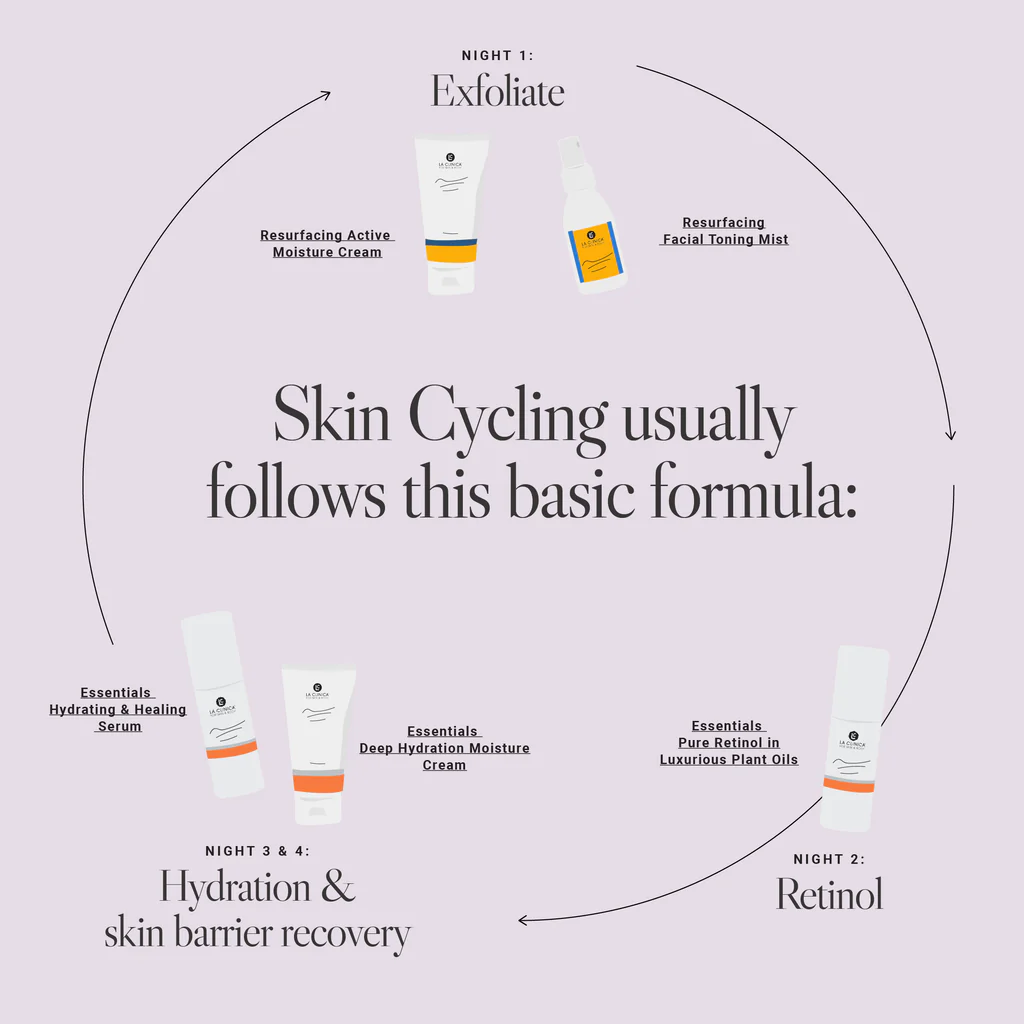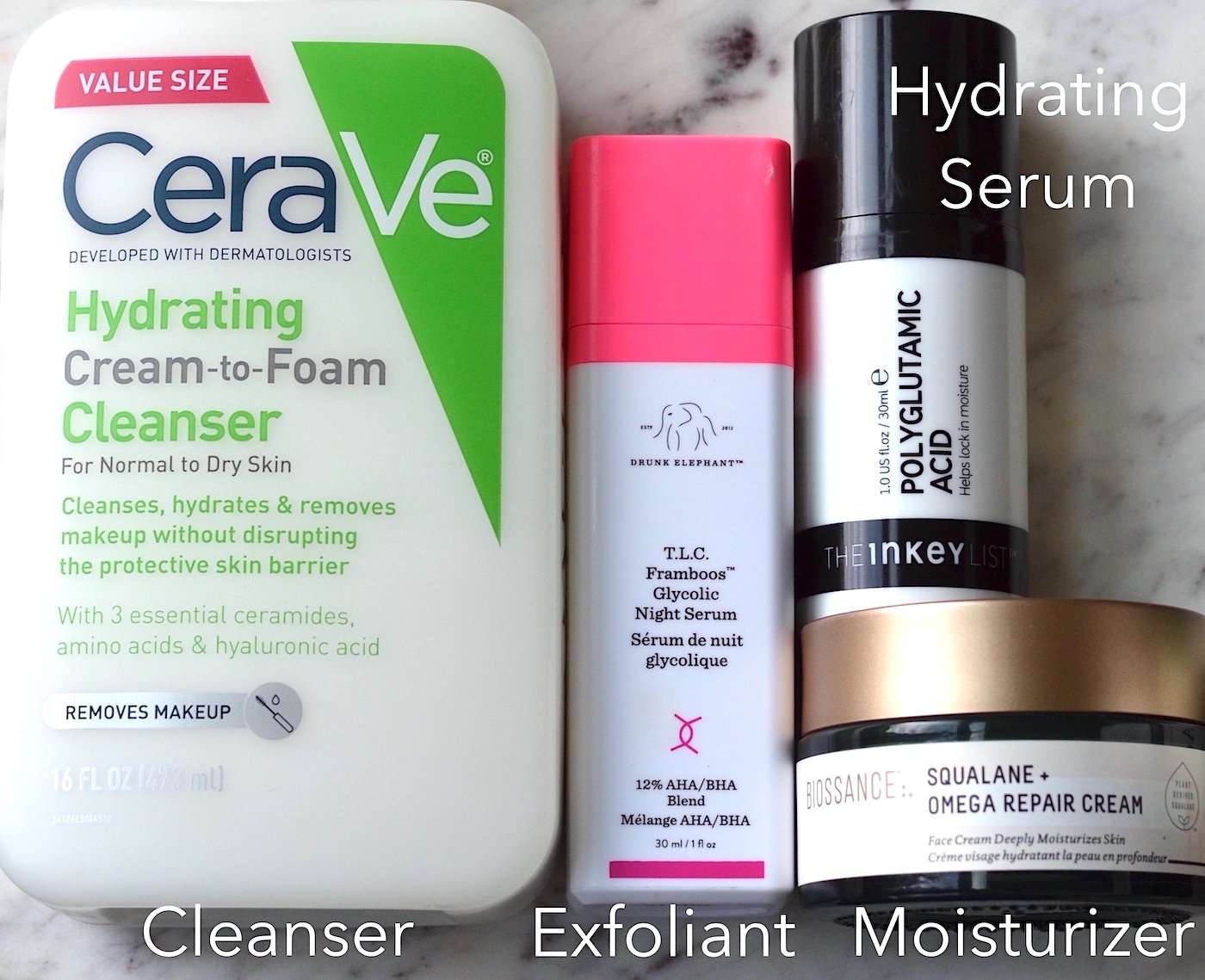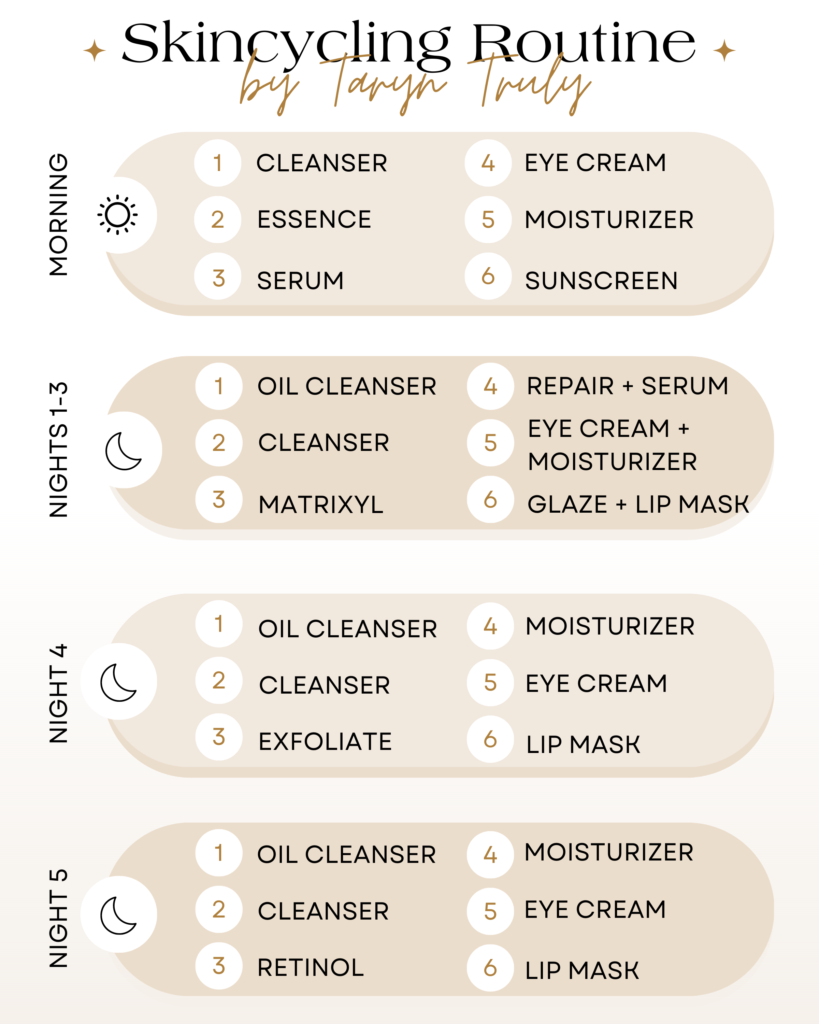
Skin cycling is one of the latest beauty trends to take over TikTok. With a cool 3.5 billion views on the hashtag, far from being a weird and wacky method, the skin cycling trend actually may work, according to a number of skin experts and dermatologists. But what is it, exactly?
What Is Skin Cycling?

While the term “skin cycling” is new — it was coined by Whitney Bowe, MD, a New York City–based board-certified dermatologist, whose skin cycling TikTok post has 2.1M views — the concept has been around for a while. Skin cycling is essentially a four-night skin care regimen that you repeatedly cycle through to simplify your routine and potentially reduce inflammation from active ingredients. Dermatologists have been recommending intermittent or alternating use of active ingredients for a long time. Instead of piling more products on top of each other, skin cycling encourages people to use products strategically so that they actually complement one another.
How To Incorporate It Into Your Skincare Regimen?

Skin cycling is a skin-care routine that allows for “rest days” during the week so that your skin can repair itself after using certain products. This can help prevent irritation and inflammation, says Wattenberg.
To get started with skin cycling, you’ll need:
- An exfoliator (like glycolic acid or salicylic acid)
- A retinoid (think retinol or retinaldehyde)
- A moisturizer (opt for a fragrance-free ointment or cream.
With those ingredients in hand, it’s all a matter of timing. “The classic skin cycling regimen is a four-night cycle — the first is the exfoliation night, the second is a retinoid night, and the third and fourth are recovery nights, then you repeat the cycle.
How Does Skin Cycling Work?
Here’s a night-by-night how-to:
Night No. 1: Exfoliation
On this night, you’ll cleanse and pat dry, then exfoliate, which takes off the dead skin cells from the surface layer of your skin. There’s a good reason for this step coming first: “Your other products will perform more effectively because they are able to penetrate more deeply into the skin in a controlled, predictable way,” says Bowe. Afterward, you’ll want to moisturize. A quick word of warning, though: While some people say exfoliation improves the look of their skin, if you do it incorrectly — too frequently, for example — it can lead to redness and irritation, the AAD warns. Another tip: Bowe prefers chemical exfoliants, which she says are more gentle than physical scrubs.

Night No. 2: Retinoids
This night is focused on retinoids, which are vitamin A derivatives that can help reduce the appearance of fine lines and wrinkles. Retinoids are one of the powerful ingredients to include in your skin cycling routine. But they also come with a disclaimer: They can be very irritating when you first introduce them, or if you have sensitive, reactive skin. Before applying, be sure to cleanse and pat dry. For those especially sensitive to retinoids, it’s a good idea to first moisturize around sensitive areas, like under your eyes and in the corners of your nose, before putting the retinoid on. And if your skin is still feeling dry, you can moisturize again, on top of the retinoid.
Nights No. 3 and 4: Recovery
The recovery period, typically nights three and four, is the final step. “On recovery nights, you hold off on the exfoliating acids and retinoids and give your skin a chance to recover, You’ll want to focus on nourishing your skin microbiome and repairing your skin barrier, so think: hydration and moisture, and avoid any irritating ingredients. Cleanse your skin before applying a moisturizer, and for these nights you don’t have to pat dry — it’s fine to leave your skin a little damp. You can also apply a hydrating serum before your moisturizer.
In practice, your cycle timing can depend on skin type, and your dermatologist may suggest personalizing it further. If you are experiencing sensitivity and irritation, you can increase your recovery nights.
A Note on Frequency

You can repeat and modify your skin-cycle regime over time. It can be a reset, but it can be used continuously depending on how your skin responds to the ‘active’ ingredients you are applying.
One good rule of thumb: When it comes to your routine, whether you’re skin cycling or otherwise, consistency is more important than frequency. Products are much more effective when used regularly, even if you’re not using them daily.
Benefits Of Skin Cycling:

- Skin Cycling May Reduce Negative Product Side Effects
- Skin Cycling Can Help Repair Your Skin Barrier
- Skin Cycling Can Help Protect Skin Against Seasonal Issues
Not sure if a skin-cycling routine is right for you? When in doubt, ask your dermatologist for your best course of action.



